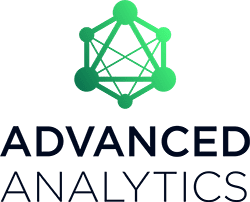The mainstreaming of predictive analytics and generative AI has brought Data Management into focus. Artificial Intelligence both runs on and produces a vast amount of data that must be effectively managed, governed, and analyzed. However, a recent survey of 1,000 North American executives revealed that organizations aren’t quite up for the challenge.
Many companies are not prepared to implement AI or other technologies into their existing IT infrastructure and workforce in a timely manner or in a way that allows for the full benefits of these new technologies. That’s partially because companies are still struggling to utilize their data to its full potential. Nearly half (46%) of organizations don’t use data to gain insights or make decisions, because a whopping 72% don’t consider their data a strategic asset. Here, I explore some of the reasons behind this disconnect and how companies can correct their Data Strategy before it’s too late.


Lack of Employee Skillsets
According to the 2023 “Innovation Index,” enterprise workforces are not ready for the AI revolution because there is a dire lack of employees equipped to handle such technology and the data that comes with it. Forty-three percent of organizations – a nearly three-fold increase from 2021 – say lack of employees with necessary data analysis skills is their biggest challenge for using their data. While overall job openings are at their lowest level in nearly three years, information/tech job openings are expected to grow by as much as 32% between 2022 and 2032, showing the continued demand for workers in this space.
Despite this, organizations are not investing enough to build up the skills of their workforce. Only 44% are reskilling existing resources, while 33% are recruiting new employees. Companies will have to take on a greater role in educating and upskilling their employees around AI and Data Management / analytics if they want to keep up with the current pace of advancements in the field. Those that rely on the marketplace to change the skills of their workforce risk being left behind.
Broken Trust and Outdated IT
Only 22% of organizations trust their own data, and more than half (56%) of executives don’t make managing data a high investment priority. Data can be a company’s greatest asset, but only if it is accessible, responsibly managed, and secured. It’s estimated that by 2025 the world will store 200 zettabytes of data, and if nothing changes, companies will continue struggling to harness the tremendous volume of data at their disposal. In addition to the lack of employees who can engineer and analyze the data, 86% of organizations say their tech is inadequate or outdated, which also hinders them from effectively using their data.
Creating data literacy programs for employees would result in the models and output from data analytics being more widely understood and interpretable across the organization, thereby improving confidence in the data. Avoiding any inconsistencies in the data is also important to building and maintaining trust. Get rid of data mismatches by creating one dataset or “single source of truth” to streamline data sources.
Data’s Impact on Innovation
Underutilization of data contributes to a larger, business-wide problem. While 96% of executives surveyed in the Innovation Index believe that innovation – the development of new processes, products, or services that increase business value over existing offerings – will be a primary source of achieving growth over the next two years, only 21% said that they are currently meeting their innovation goals.
This leaves organizations at a huge disadvantage, especially when it comes to emerging technologies like AI that are advancing in leaps and bounds.
The Innovation Index identified a group that stood apart from the rest of those surveyed in exceeding expectations related to innovation investments, however. This group of “innovators” made up only 11% of executives and distinguished themselves in many ways, but especially when it came to Data Management. They were exemplary in their ability to be data-driven, with 59% being advanced in managing data, compared to 41% of the regular market. They also spent two times more on core technology innovation initiatives than the regular market, and they were also more focused on modernizing technology.
In order to overcome the challenges outlined here to effectively leverage data and keep up with the fast-paced technology landscape, businesses will need to modernize their IT architecture, built trust in their data, reskill their workforce, and cultivate a culture of innovation within their organization. Only then can they stop playing catch-up and become true innovators.
- SEO Powered Content & PR Distribution. Get Amplified Today.
- PlatoData.Network Vertical Generative Ai. Empower Yourself. Access Here.
- PlatoAiStream. Web3 Intelligence. Knowledge Amplified. Access Here.
- PlatoESG. Carbon, CleanTech, Energy, Environment, Solar, Waste Management. Access Here.
- PlatoHealth. Biotech and Clinical Trials Intelligence. Access Here.
- Source: https://www.dataversity.net/organizations-are-underutilizing-their-data-heres-why-and-how-to-fix-it/
- :has
- :is
- :not
- $UP
- 000
- 1
- 200
- 2021
- 2022
- 2025
- a
- ability
- accessible
- achieving
- across
- Ad
- addition
- advanced
- advancements
- advancing
- AI
- allows
- also
- American
- amount
- analysis
- analytics
- analyze
- analyzed
- and
- any
- apart
- architecture
- ARE
- around
- artificial
- artificial intelligence
- AS
- asset
- At
- avoiding
- BE
- because
- become
- before
- behind
- being
- believe
- benefits
- between
- Biggest
- both
- bounds
- brought
- build
- Building
- built
- business
- businesses
- but
- by
- came
- CAN
- challenge
- challenges
- change
- Changes
- CNN
- comes
- Companies
- Company’s
- compared
- confidence
- Consider
- continue
- continued
- contributes
- Core
- correct
- Creating
- Cultivate
- Culture
- Current
- Currently
- data
- data analysis
- Data Analytics
- data management
- DATAVERSITY
- decisions
- Demand
- Development
- dire
- Disadvantage
- disposal
- Distinguished
- Dont
- educating
- effectively
- emerging
- emerging technologies
- Employee
- employees
- engineer
- enough
- Enterprise
- equipped
- especially
- essentials
- Ether (ETH)
- Event
- executives
- existing
- expectations
- explore
- fast-paced
- field
- Fix
- Focus
- focused
- For
- Forbes
- from
- from 2021
- full
- Gain
- generative
- Generative AI
- get
- Goals
- governed
- greater
- greatest
- Group
- Grow
- Growth
- Half
- handle
- harness
- Have
- here
- High
- hinders
- How
- How To
- However
- HTML
- HTTPS
- huge
- i
- identified
- if
- Impact
- implement
- important
- improving
- in
- inconsistencies
- Increase
- index
- Infrastructure
- initiatives
- Innovation
- innovators
- insights
- Intelligence
- into
- investing
- investment
- Investments
- IT
- ITS
- Job
- Keep
- Lack
- landscape
- larger
- Late
- leaps
- learning
- left
- Level
- Leverage
- like
- literacy
- lowest
- lowest level
- LP
- machine
- machine learning
- made
- mainstreaming
- maintaining
- make
- managed
- management
- managing
- manner
- many
- Market
- marketplace
- meeting
- models
- modernize
- modernizing
- more
- much
- must
- nearly
- necessary
- Need
- New
- New technologies
- next
- North
- nothing
- of
- Offerings
- on
- ONE
- only
- openings
- or
- order
- organization
- organizations
- Other
- outlined
- output
- over
- Overcome
- own
- Pace
- percent
- plato
- Plato Data Intelligence
- PlatoData
- playing
- potential
- predictive
- Predictive Analytics
- prepared
- primary
- priority
- PRNewswire
- Problem
- processes
- produces
- Products
- Programs
- quite
- ready
- reasons
- recruiting
- regular
- related
- rely
- reskilling
- Resources
- responsibly
- REST
- result
- Revealed
- Revolution
- Rid
- Risk
- Role
- runs
- Said
- say
- Secured
- Services
- showing
- skills
- some
- Source
- Sources
- Space
- spent
- Still
- stood
- Stop
- store
- Strategic
- streamline
- Struggling
- such
- surveyed
- Take
- tech
- Technologies
- Technology
- technology innovation
- than
- that
- The
- the world
- their
- Them
- themselves
- then
- There.
- thereby
- These
- they
- this
- those
- three
- timely
- times
- to
- too
- tremendous
- true
- Trust
- two
- understood
- upskilling
- use
- using
- utilize
- value
- Vast
- viewed
- volume
- want
- Way..
- ways
- were
- when
- which
- while
- WHO
- why
- widely
- will
- with
- within
- workers
- Workforce
- world
- would
- years
- zephyrnet











